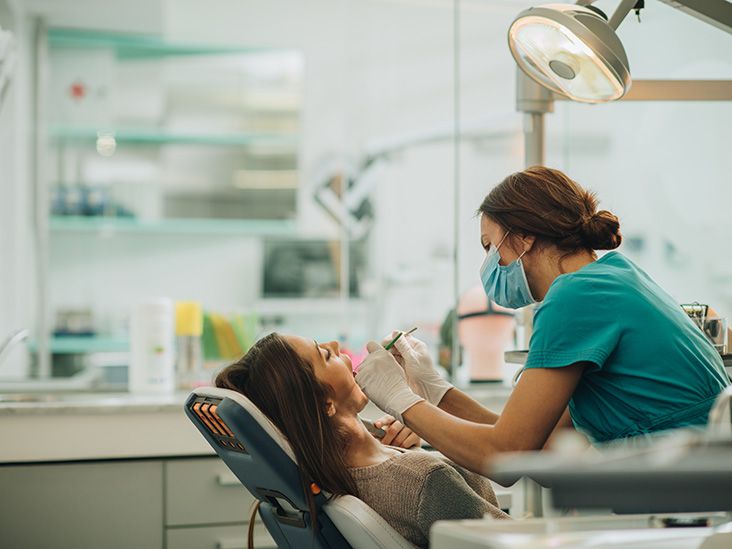Typical Inquiries About Dental Veneers Addressed
Oral veneers have actually come to be a significantly in-demand choice for those looking to improve their smiles, yet many people stay uncertain regarding various facets of their usage. Key inquiries commonly occur concerning the application process, long life, and prospective threats linked with these aesthetic enhancements. In addition, the difference between porcelain and composite veneers can substantially affect one's option. As we explore these usual inquiries, it becomes vital to take into consideration not only the advantages but also the ramifications of selecting oral veneers in search of an extra confident look. What factors should one weigh before making such a choice?
What Are Oral Veneers?
Oral veneers are slim, customized shells crafted from porcelain or composite resin that are created to cover the front surface area of teeth. These dental prosthetics offer both functional and visual purposes, providing a service for numerous dental flaws, including staining, chips, gaps, and imbalance. By adhering to the teeth, veneers can considerably improve the overall look of a smile, developing an extra consistent and appealing look.
Porcelain veneers are particularly favored for their natural clarity and tarnish resistance, making them a perfect option for people looking for resilient results. In contrast, composite resin veneers are normally much less costly and can be applied in a single see, yet they might not supply the very same resilience as porcelain options.
The decision to select oral veneers frequently stems from a desire for visual enhancement, however individuals must also consider factors such as the longevity of the product, upkeep demands, and the potential demand for tooth decrease (Low Cost Veneers). Eventually, oral veneers stand for a functional and efficient option for accomplishing a radiant smile, catering to private aesthetic demands while advertising confidence and self-esteem
Just How Are Veneers Applied?
The application process for veneers calls for cautious planning and accuracy to guarantee optimal outcomes. The procedure generally starts with a comprehensive consultation, where the dental professional evaluates the individual's oral health and wellness, talks about desired end results, and identifies the proper kind of veneers, whether porcelain or composite material.
When the therapy strategy is established, the dental professional prepares the teeth by getting rid of a thin layer of enamel, generally concerning 0.5 mm to 1 mm, to fit the veneer. This step is essential as it makes sure a correct fit and avoids the veneers from showing up large - Dental Veneers. After prep work, impressions of the teeth are required to create customized veneers that match the individual's special dental framework and visual preferences
While the long-term veneers are being made in a dental research laboratory, momentary veneers might be put to shield the prepared teeth. When the long-term veneers are prepared, the dental expert will very carefully bond them to the teeth using a strong oral adhesive. Last adjustments are made to make certain proper positioning and attack, adhered to by polishing for an all-natural look. The process culminates in a follow-up appointment to monitor the veneers' fit and the person's complete satisfaction with their new smile.
What Are the Conveniences?

Moreover, veneers are understood for their longevity and resistance to staining contrasted to all-natural teeth. Made from top notch products such as porcelain or composite resin, they can preserve their look for many years with appropriate care. This durability makes them a functional financial investment in one's oral look.
Along with visual renovations, veneers can additionally contribute to enhanced oral health. By covering damaged or deteriorated teeth, they can supply additional assistance and protection, helping to avoid additional decay or wear and tear. This safety aspect can reduce the need for more considerable dental procedures in the future.

For How Long Do They Last?
With correct treatment and maintenance, dental veneers can last anywhere from 10 to 15 years, making them a long-lasting service for boosting one's smile. The longevity of veneers mostly depends upon the material used, the high quality of the preliminary positioning, and the patient's adherence to oral hygiene techniques.
Porcelain veneers are known for their sturdiness and resistance to discoloration, commonly lasting closer to the 15-year mark when cared for suitably. Compound veneers, while extra affordable, might call for substitute sooner, frequently within 5 to one decade because of their susceptibility to use and discoloration.

Furthermore, putting on a mouthguard throughout sports or nighttime can supply added protection. Eventually, while veneers use a substantial visual check over here enhancement, their durability is dramatically influenced by the commitment to correct oral care and regular examinations with an oral specialist.
Are There Any Type Of Risks?
Considering the transformative impacts of dental veneers, it is very important to recognize the possible risks related to their application. While veneers can boost the appearance of teeth, the procedure involves the removal of a thin layer of enamel, which can increase tooth sensitivity and susceptability to degeneration.
One significant risk is the possibility of improper placement or suitable, leading to pain, bite misalignment, or perhaps damage to the underlying tooth framework. In addition, if the veneers are not kept effectively, they can come to be blemished or damaged with time, necessitating substitute.
People dig this might additionally experience allergies to the materials used in the veneers, particularly if they have sensitivities to certain dental compounds. In addition, while veneers are long lasting, they are not unbreakable; excessive force from grinding or clinching can lead to cracks.
It is necessary for clients to talk to a certified dental specialist to evaluate their specific dangers and to follow aftercare guidelines vigilantly. By understanding these threats, clients can make educated decisions concerning their dental veneer therapy and guarantee the long life and success of Discover More Here their enhancements.
Conclusion
In summary, oral veneers stand for an important cosmetic option for boosting smiles, with considerations concerning their application, benefits, durability, and connected threats. Ultimately, informed decision-making relating to oral veneers can lead to sufficient visual outcomes and enhanced dental health and wellness.
Oral veneers are slim, custom-made coverings crafted from porcelain or composite material that are made to cover the front surface of teeth. After preparation, impressions of the teeth are taken to produce customized veneers that match the client's unique dental structure and aesthetic preferences.
While the permanent veneers are being fabricated in a dental laboratory, short-lived veneers might be positioned to protect the prepared teeth. As soon as the permanent veneers are ready, the dental professional will meticulously bond them to the teeth making use of a solid oral adhesive. Eventually, notified decision-making relating to dental veneers can lead to satisfying visual end results and boosted oral health and wellness.